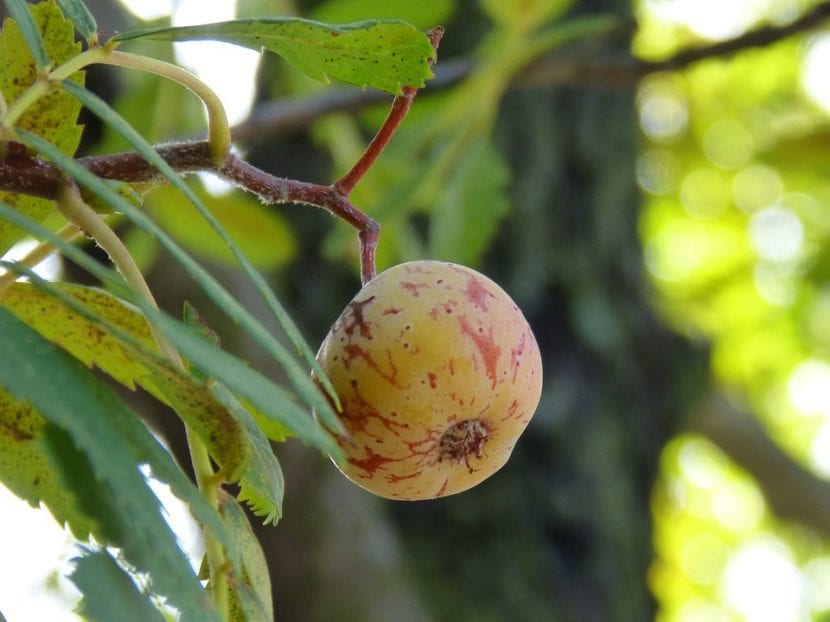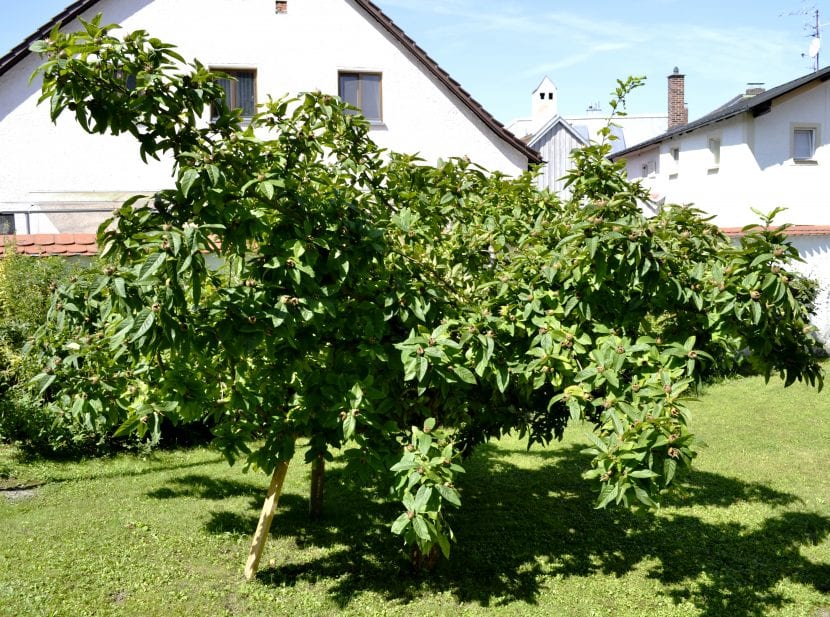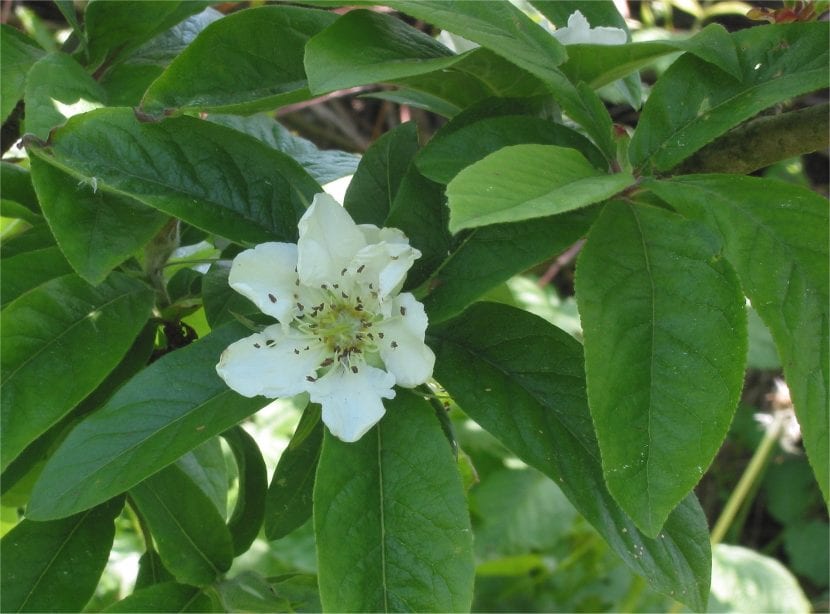
El European medlar It is one of those fruit trees that is gradually being withdrawn from the trade: not because it is toxic, or harmful, or anything like that, but because there is a species, the eryobotrya japonica (Japanese medlar), which is replacing it, which is a shame because our protagonist it is a very resistant plant and very easy to care for.
Therefore, we are going to introduce you to mespilus germanica, which is how it is called in botanical lingo. In this way, you can decide if you want to have a specimen in your garden or orchard 🙂.
Origin and characteristics

The European medlar, whose scientific name is mespilus germanica, is an evergreen fruit tree native to Southeast Europe and Asia Minor. As a curiosity, to say that it was cultivated about 3000 years ago in the Caspian Sea region, although today it has been naturalized in almost all of Europe.
Reaches a height of 6 meters, being able to exceed 8m if the growing conditions are really good. Its crown is low and wide, and can be pruned to give it a rounded or parasol shape. It blooms between May and June in the northern hemisphere. The flowers are solitary and are composed of 5 white or pink petals.
The fruits are globular pommel, which go from green to yellowish brown when ripe, and are about 2-3cm long. Its flavor is bittersweet, and can be consumed fresh or in preparations based on wine or jellies.
Their life expectancy is between 30 and 50 years.
What are their cares?

If you decide to get a copy, we recommend providing the following care:
- Location: outside, in full sun.
- Earth:
- Pot: universal growing substrate mixed with 30% perlite.
- Garden: grows slightly acidic soils (pH 6-6,5), with good drainage.
- Irrigation: 2-3 times a week in summer and a little less the rest of the year.
- Subscriber: in spring and summer it must be paid with organic fertilizers, in powder if it is in the ground or liquid if it is in a pot.
- Multiplication: by seeds in spring.
- Pruning: at the end of winter, dry, diseased or weak branches must be removed. In addition, you have to trim those that have grown too much.
- Rusticity: withstands cold and frosts down to -18ºC.
What did you think of the mespilus germanica?
To my knowledge, the photo you show of the fruit does not correspond to Mispilus Germanica.
Hello Leon.
Can you then show us a photo of the European medlar by Facebook?
A greeting.